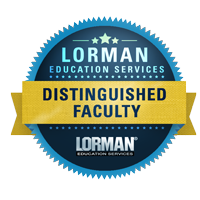
Give your presentations LIFE rather than SUCKING THE LIFE out of your audience.
I’ve been speaking publically for more than three decades. Last year, I spoke at conferences, seminars and workshops in over 43 different cities. I’m still a student who continually wants to improve. Presentations are very time consuming and require a lot of hard work. I want mine to be memorable and make a difference.
Following a presentation that I made to the Nashville American Marketing Association, I’ve received dozens of responses from attendees. Many informed me that what I had to say motivated them to act. I received the following kind note via Twitter, from the Nashville AMA president, Liz Denning,
“Michael, you inspired me at @NashvilleAMA. I started this blog about branded entertainment, Gamma Blast. Thanks SO much.”
Another example is this one from Krystyna Bowling, New Business Coordinator for the Buntin Group:
I’ve received over 100 emails from other attendees requesting a copy of my leave behind, “7 Steps for Fueling New Business Through Social Media”.
Delivering a speech that moves people to action STARTS with the presentation deck.
PowerPoint and Keynote slides have the ability to empower your presentation or kill it. I’ve seen hundreds of agency presentations decks. Could somebody please tell me why great CREATIVE PEOPLE become so BORING when creating a presentation?
Studies have shown that people only remember 10% of what they hear and 20% of what they read, but about 80% of what they see and do. Retention is six times greater when the information is presented visually.
Agencies should excel in this area but most of their presentations are text heavy and data filled. They are painfully boring and forgettable.
Here are the three steps that I recommend for building an effective presentation for new business:
First Step: Core Message
Your presentation should be audience focused. It’s all about them, not about you. I begin my presentation process by:
- Reviewing the theme and objectives for the event
- Understanding the specific needs of the audience
- Evaluating what I can share from my experience and expertise that will be of value to the audience
I then narrow down the primary message.
What is the one lesson am I trying to teach? What is the single most important idea that my audience can take away from my presentation?
It could represent a need, a problem or a question the audience wants answered. I try to provide solutions in my presentation.
The primary message is foundational to any speech. It will provide focus, save preparation time and make your presentation much easier to create.
If your core message isn’t clear to you I can guarantee that it won’t be clear to your audience. An exercise that may help you to clearly define your message is to write it down using 10 words or less.
I try to stick to the rule of three for presentations. Almost every Steve Job presentation was divided into three parts. You might have twenty points to make, but your audience is only capable of retaining three or four points in short-term memory. Give them too many points and they’ll forget everything you’ve said.
Second Step: Storyboarding
Once I’ve identified the heart of my speech I conduct a brainstorming session and begin storyboarding my presentation.
I like to create a visual outline of my presentation using full-bleed photos and images inserted into individual slides using Keynote. I can quickly build slides by inserting common licensed photos that I’ve found through Photopin.com. The images serve as visual pillars for what I want to say.
I use Keynote’s Light Table view to quickly arrange the order of my slides to help me clearly communicate my message.
This exercise is both easy and fun. I enjoy looking for just the right images to express the key points that are essential to my main message. I’ll end up with dozens of visuals for key thoughts.
I have only a single thought per slide. When I find an image, I can create the slide by inserting it within seconds allowing me to create a base of slides to work from in a short period of time.
During my brainstorming session, I’m not concerned with the slide order, the number of slides, or any text. I’ll intentionally end up with a surplus of material.
Using Keynote’s Light Table view lets me examine and adjust the sequence and flow of the presentation. I have the ability to experiment with the arrangements of the different slides until I find the order and flow that I think will work best. I can easily delete the slides that I’m not going to use.
I prefer this method over pen and paper primarily because it is so easy to create and work with. I can also pull in slides from one presentation to the next to help build a similar presentation.
As I whittle down my slides, adjust the order I can hone my presentation deck to flow like a story. Having a visual outline really makes this process easy.
When I do choose to use text, less is more. If you use too much text, you’ll lose your audience. They’ll read your slide text faster than you can speak. I’ve found that by using images and telling stories will keep my audience’s attention better.
Here are some additional tips for creating effective slides:
- Use only a keyword or two per slide
- Represent each point visually, one idea per slide
- Your slides shouldn’t double as your leave-behind or handout
- Using visual slides allows you to use as many as needed to get your point across
- It’s best to fill your slides with large images
- Use interesting, high-resolution images that create an emotional response
- Don’t use cliché images
- Size text to be viewed from the very back row
- I prefer to use a single color background for my template
- I also prefer not to use animations and dramatic slide transitions
- Don’t use entire charts, graphs and tables – only highlight key stats
- Combine your key stats with images
- If you use video, embed it into your presentation
- Create consistency with the style of your images and fonts
- Limit the different fonts used for text to two
- Your font selection should match your presentation
I want my presentation to be specific to the event. My method allows me to easily make adjustments and additions right up until presentation time (if I don’t have to submit it in advance). I learn so much when I’m on the ground at the event, conversing face-to-face with the event organizers and attendees. I’ll glean a lot that will make my presentation more impactful with some easily made revisions.
If someone were to view my presentation deck, it’s not going to make much sense without me. If it does make sense, I’ve included too much. A good number of my slides won’t have any copy on them at all.
The way that I create my presentation deck in Keynote or PowerPoint won’t become a crutch. I’ll be able to maintain eye contact, have more energy and passion to connect with my audience. My slides will only enhance what I have to share.
Third Step: Rehearse
Every agency presentation must be focused on capturing the audience’s ATTENTION and keeping it. It is the presentation rule that matters most.
Rehearsing your presentation is key.
I’m amazed that so many agencies don’t give more time to rehearsing their presentations. Most seem to limit their rehearsals to three. Usually two rehearsals the night before and one the day of the event.
Steve Jobs spent hours rehearsing every facet of his presentation. He made a presentation look effortless but that look of spontaneity came after hours and hours of practice.
Carmine Gallo, the author of, The Presentation Secrets of Steve Jobs, shares that,
“for two full days before a presentation, Jobs will practice the entire presentation, asking for feedback from product managers in the room. For 48 hours, all of his energy is directed at making the presentation the perfect embodiment of Apple’s messages.”
Time quickly becomes your enemy.
When I’ve been given a date for a presentation, I will set a hard date to finish my slides to allow for plenty of time to rehearse. I want to master my material so that when I’m presenting, it will look spontaneous.
The rehearsals help me to know what slides to add, delete, revise as well as how to change-up the order of the slides so the presentation flows smoothly.
I rehearse silently and slowly, reflecting on each individual slide.
I’ll also practice out loud and go through my presentation rapidly. This helps me to make refinements so that I’m clearly articulating and reinforcing my core message and key points .
I rehearse a number of times at normal speed to gauge and adjust my timing. I try to end a presentation 5 minutes earlier than my alloted time.
The many rehearsals help me to be relaxed and confident. Then, when I’m presenting, I can focus on keeping my audience engaged.
- I do a much better job of making eye contact because I know my material so well.
- My passion will capture the attention of my audience. I’ve learned that my passion is more important than perfection. I strive to make my presentations inspirational, not flawless.
- Rehearsals allow me to do the little things that will keep my audience engaged such as changing up the tone of my voice, my speaking volume, body language or even where I stand.
- I’m a student of the cadence, inflection and the use of rhyme and repetition that some inspirational ministers have. Rehearsals help me to hone my delivery style that will excite my audience with memorable effectiveness.
- Rehearsals allow me to continually tighten-up my presentation. I always try to remember, short is good. As my mother would say,“the mind can only absorb as much as the seat can stand.”
Here are some additional resources for creating effective presentations that you might find helpful:
- Talk Like Ted: The 9 Public Speaking Secrets of the World’s Top Minds
- Perfect Pitch: The Art of Selling Ideas and Winning New Business
- Platform: Get Noticed In A Noisy World
- Presentation Zen: Simple Ideas on Presentation Design and Delivery
- The Art of the Pitch: Persuasion and Presentation Skills that Win Business
- The Presentation Secrets of Steve Jobs
- The Win Without Pitching Manifesto





